Konstantinos Pelechrinis
Understanding team collapse via probabilistic graphical models
Feb 14, 2024



Abstract:In this work, we develop a graphical model to capture team dynamics. We analyze the model and show how to learn its parameters from data. Using our model we study the phenomenon of team collapse from a computational perspective. We use simulations and real-world experiments to find the main causes of team collapse. We also provide the principles of building resilient teams, i.e., teams that avoid collapsing. Finally, we use our model to analyze the structure of NBA teams and dive deeper into games of interest.
hood2vec: Identifying Similar Urban Areas Using Mobility Networks
Jul 17, 2019
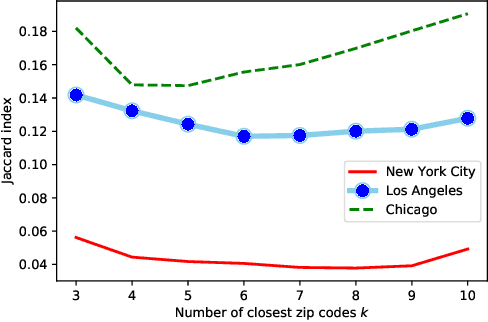

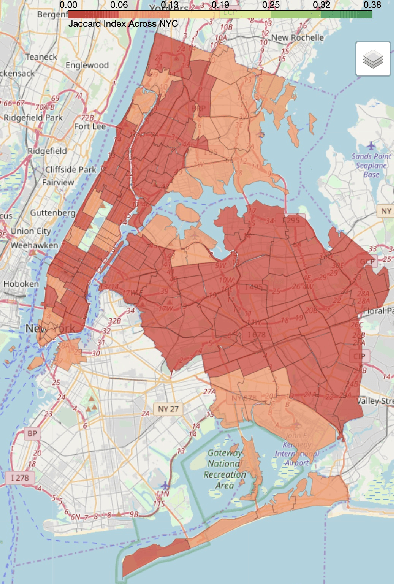
Abstract:Which area in NYC is the most similar to Lower East Side? What about the NoHo Arts District in Los Angeles? Traditionally this task utilizes information about the type of places located within the areas and some popularity/quality metric. We take a different approach. In particular, urban dwellers' time-variant mobility is a reflection of how they interact with their city over time. Hence, in this paper, we introduce an approach, namely hood2vec, to identify the similarity between urban areas through learning a node embedding of the mobility network captured through Foursquare check-ins. We compare the pairwise similarities obtained from hood2vec with the ones obtained from comparing the types of venues in the different areas. The low correlation between the two indicates that the mobility dynamics and the venue types potentially capture different aspects of similarity between urban areas.
tHoops: A Multi-Aspect Analytical Framework Spatio-Temporal Basketball Data
Aug 23, 2018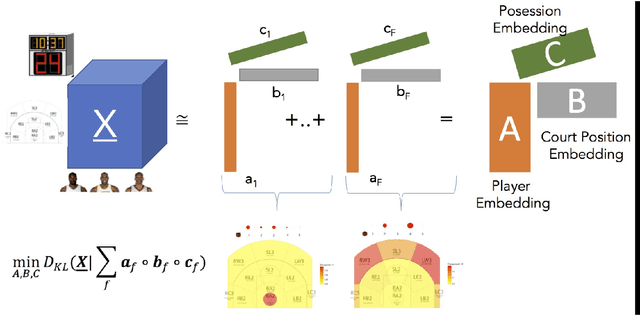
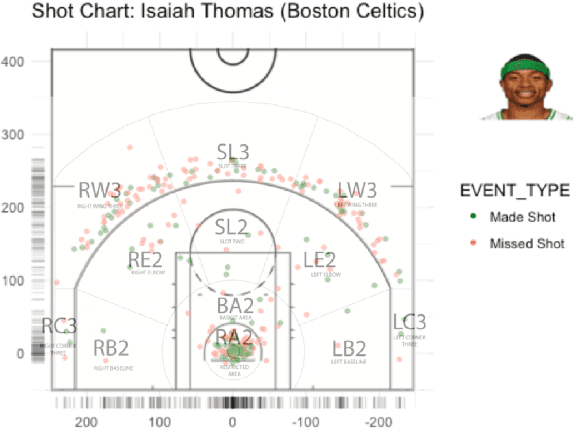
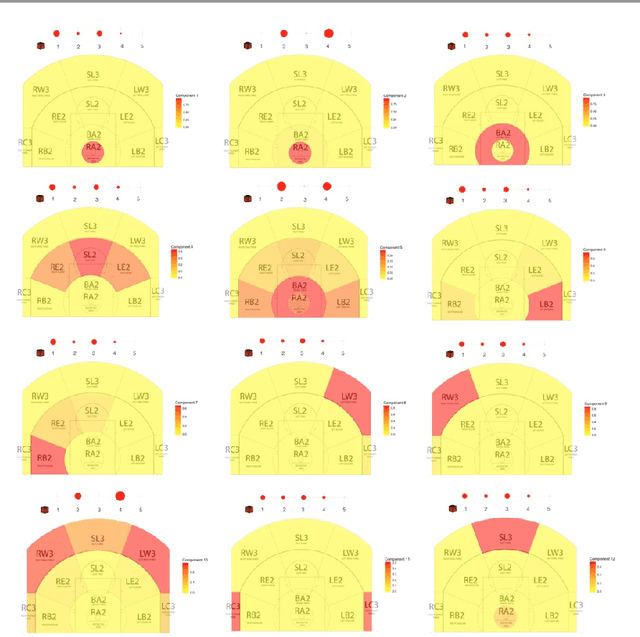
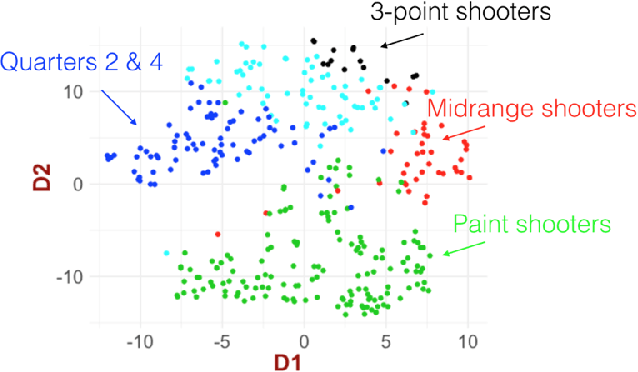
Abstract:During the past few years advancements in sports information systems and technology has allowed us to collect a number of detailed spatio-temporal data capturing various aspects of basketball. For example, shot charts, that is, maps capturing locations of (made or missed) shots, and spatio-temporal trajectories for all the players on the court can capture information about the offensive and defensive tendencies and schemes of a team. Characterization of these processes is important for player and team comparisons, pre-game scouting, game preparation etc. Playing tendencies among teams have traditionally been compared in a heuristic manner. Recently automated ways for similar comparisons have appeared in the sports analytics literature. However, these approaches are almost exclusively focused on the spatial distribution of the underlying actions (usually shots taken), ignoring a multitude of other parameters that can affect the action studied. In this work, we propose a framework based on tensor decomposition for obtaining a set of prototype spatio-temporal patterns based on the core spatiotemporal information and contextual meta-data. The core of our framework is a 3D tensor X, whose dimensions represent the entity under consideration (team, player, possession etc.), the location on the court and time. We make use of the PARAFAC decomposition and we decompose the tensor into several interpretable patterns, that can be thought of as prototype patterns of the process examined (e.g., shot selection, offensive schemes etc.). We also introduce an approach for choosing the number of components to be considered. Using the tensor components, we can then express every entity as a weighted combination of these components. The framework introduced in this paper can have further applications in the work-flow of the basketball operations of a franchise, which we also briefly discuss.
 Add to Chrome
Add to Chrome Add to Firefox
Add to Firefox Add to Edge
Add to Edge